Main Body
Chapter 8. Services Marketing
Ray Freeman and Kelley Glazer
Learning Objectives
- Explain the meaning of services marketing
- Describe the differences between marketing services and marketing products
- Describe the characteristics of a marketing orientation and its benefits
- Define key services marketing terminology
- Explain the PRICE concept of marketing
- Provide examples of the 8 Ps of services marketing
- Gain knowledge of key service marketing issues and trends
Overview
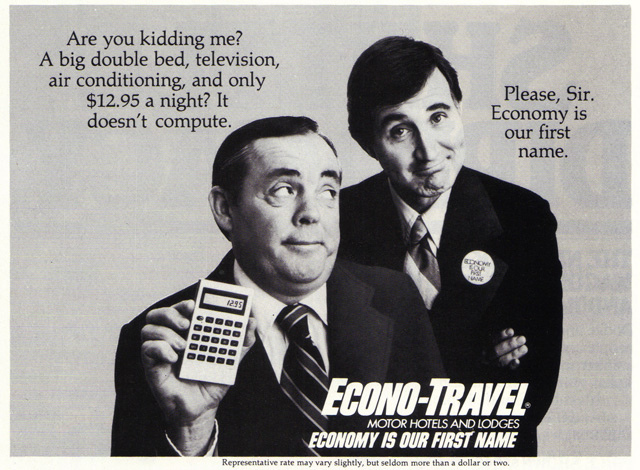
Marketing is a continuous, sequential process through which management plans, researches, implements, controls, and evaluates activities designed to satisfy the customers’ needs and wants, and meet the organization’s objectives. According to Morrison (2010), services marketing “is a concept based on a recognition of the uniqueness of all services; it is a branch of marketing that specifically applies to the service industries”(p. 767).
Marketing in the tourism and hospitality industry requires an understanding of the differences between marketing goods and marketing services. To be successful in tourism marketing, organizations need to understand the unique characteristics of their tourism experiences, the motivations and behaviours of travelling consumers, and the fundamental differences between marketing goods and services.
The Evolution of Marketing
Until the 1930s, the primary objective of businesses was manufacturing, with little thought given to sales or marketing. In the 1930s, a focus on sales became more important; technological advances meant that multiple companies could produce similar goods, creating increased competition. Even as companies began to understand the importance of sales, the needs and wants of the customer remained a secondary consideration (Morrison, 2010).
In 1944, the first television commercial, for Bulova watches, reached 4,000 sets (Davis, 2013). The decades that followed, the 1950s and 1960s, are known as an era when marketing began to truly take off, with the number of mediums expanding and TV ad spending going from 5% of total TV revenues in 1953 to 15% just one year later (Davis, 2013).
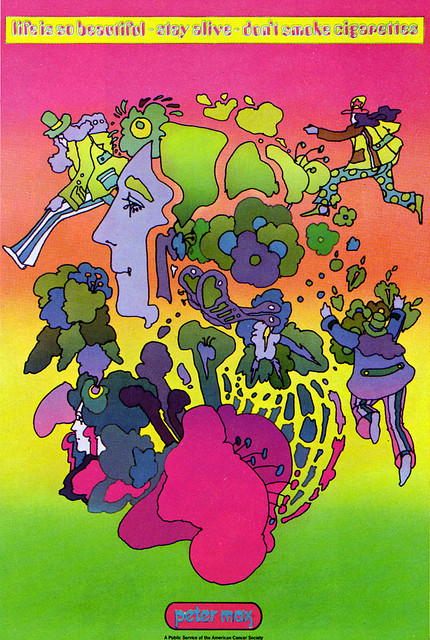
The era from approximately 1950 to around 1970 was known as a time of marketing orientation (Morrison, 2010). Customers had more choice in product, this required companies to shift focus to ensure that consumers knew how their products matched specific needs. This was also the time where quality of service and customer satisfaction became part of organizational strategy. We began to see companies develop internal marketing departments, and in the 1960s, the first full-service advertising agencies began to emerge.
Societal marketing emerged in the 1970s when organizations began to recognize their place in society and their responsibility to citizens (or at least the appearance thereof). This change is demonstrated, for example, by natural resource extraction companies supporting environmental management issues and implementing more transparent policies. This decade saw the emergence of media we are familiar with today (the first hand-held mobile phone was launched in 1973) and the decline of traditional marketing through vehicles such as print; the latter evidenced by the closure of LIFE Magazine in 1972 amid complaints that TV advertising was too difficult to compete with (Davis, 2013).
The mid-1990s ushered in the start of the online marketing era. E-commerce (electronic commerce) revolutionized every industry, perhaps impacting the travel industry most of all. Tourism and hospitality service providers began making use of this technology to optimize marketing to consumers; manage reservations; facilitate transactions; partner and package itineraries; provide (multiple) customer feedback channels; collect, mine, analyze, and sell data; and automate functions. The marketing opportunities of this era appear limitless. Table 8.1 summarizes the evolution of marketing over the last century.
| [Skip Table] | |
| Timeframe | Marketing Era |
|---|---|
| 1920-1930 | Production orientation |
| 1930-1950 | Sales orientation |
| 1950-1960 | Marketing department (marketing orientation, internal agency) |
| 1960-1970 | Marketing company (marketing orientation, external agency) |
| 1970-Present | Societal marketing |
| 1995-Present | Online marketing |
| Data source: Morrison, 2010 | |
Typically, the progression of marketing in tourism and hospitality has been 10 to 20 years behind other sectors. Some in the industry attribute this to the traditional career path in the tourism and hospitality industry where managers and executives worked their way up the ranks (e.g., from bellhop to general manager) rather than through a postsecondary business education. It was commonly believed that to be a leader in this industry one had to understand the operations inside-out, so training and development of managers was based on technical and functional capabilities, rather than marketing savvy. And, as we’ll learn next, marketing services and experiences is distinct and sometimes more challenging than marketing goods. For these reasons, most businesses in the industry have been developing marketing skills for only about 30 years (Morrison, 2010).
Differences Between Goods and Services

There are four key differences between goods and services. According to numerous scholars (Regan; Rathmell; Shostack; Zeithaml et al. in Wolak, Kalafatis, & Harris, 1998) services are:
- Intangible
- Heterogeneous
- Inseparable (simultaneously produced and consumed)
- Perishable
The rest of this section details what these concepts mean.
Intangibility
Tangible goods are ones the customer can see, feel, and/or taste ahead of payment. Intangible services, on the other hand, cannot be “touched” beforehand. An airplane flight is an example of an intangible service because a customer purchases it in advance and doesn’t “experience” or “consume” the product until he or she is on the plane.
Heterogeneity
While most goods may be replicated identically, services are never exactly the same; they are heterogeneous. Variability in experiences may be caused by location, time, topography, season, the environment, amenities, events, and service providers. Because human beings factor so largely in the provision of services, the quality and level of service may differ between vendors or may even be inconsistent within one provider. We will discuss quality and level of service further in Chapter 9.
Inseparability
A physical good may last for an extended period of time (in some cases for many years). In contrast, a service is produced and consumed at the same time. A service exists only at the moment or during the period in which a person is engaged and immersed in the experience.
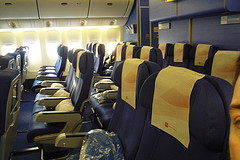
Perishability
Services and experiences cannot be stored; they are highly perishable. In contrast, goods may be held in physical inventory in a lot, warehouse, or a store until purchased, then used and stored at a person’s home or place of work. If a service is not sold when available, it disappears forever. Using the airline example, once the airplane takes off, the opportunity to sell tickets on that flight is lost forever, and any empty seats represent revenue lost.
Planning for Services Marketing
To ensure effective services marketing, tourism marketers need to be strategic in their planning process. Using a tourism marketing system requires carefully evaluating multiple alternatives, choosing the right activities for specific markets, anticipating challenges, adapting to these challenges, and measuring success (Morrison, 2010). Tourism marketers can choose to follow a strategic management process called the PRICE concept, where they:
- P: plan (where are we now?)
- R: research (where would we like to be?)
- I: implement (how do we get there?)
- C: control (how do we make sure we get there?)
- E: evaluate (how do we know if we got there?)
In this way, marketers can be more assured they are strategically satisfying both the customer’s needs and the organization’s objectives (Morrison, 2010). The relationship between company, employees, and customers in the services marketing context can be described as a services marketing triangle (Morrison, 2010), which is illustrated in Figure 8.5.
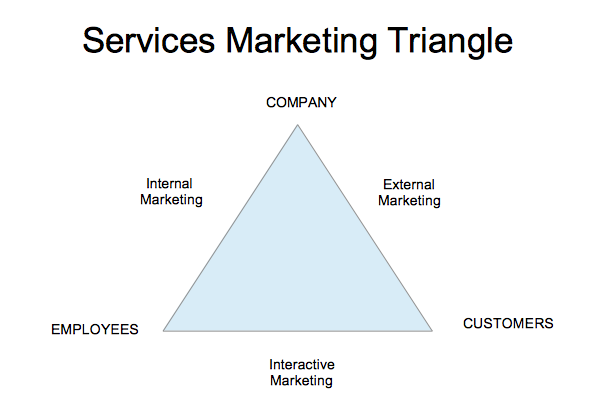
In traditional marketing, a business broadcasts messaging directly to the consumer. In contrast, in services marketing, employees play an integral component. The communications between the three groups can be summarized as follows (Morrison, 2010):
- External marketing: promotional efforts aimed at potential customers and guests (creating a promise between the organization and the guest)
- Internal marketing: training, culture, and internal communications (enabling employees to deliver on the promise)
- Interactive marketing: direct exchanges between employees and guests (delivering the promise)
The direct and indirect ways that a company or destination reaches its potential customers or guests can be grouped into eight concepts known as the 8 Ps of services marketing.
8 Ps of Services Marketing
The 8 Ps are best described as the specific components required to reach selected markets. In traditional marketing, there are four Ps: price, product, place, and promotion. In services marketing, the list expands to the following (Morrison, 2010):
- Product: the range of product and service mix offered to customers
- Place: how the product will be made available to consumers in the market, selection of distribution channels, and partners
- Promotion: specific combination of marketing techniques (advertising, personal sales, public relations, etc.)
- Pricing: part of a comprehensive revenue management and pricing plan
- People: developing human resources plans and strategies to support positive interactions between hosts and guests
- Programming: customer-oriented activities (special events, festivals, or special activities) designed to increase customer spending or length of stay, or to add to the appeal of packages
- Partnership: also known as cooperative marketing, increasing the reach and impact of marketing efforts
- Physical evidence: ways in which businesses can demonstrate their marketing claims and customers can document their experience such as stories, reviews, blog posts, or in-location signage and components
It’s important that these components all work together in a seamless set of messages and activities known as integrated marketing communications, or IMC, to ensure the guests receive a clear message and an experience that meets their expectations.
Integrated Marketing Communications
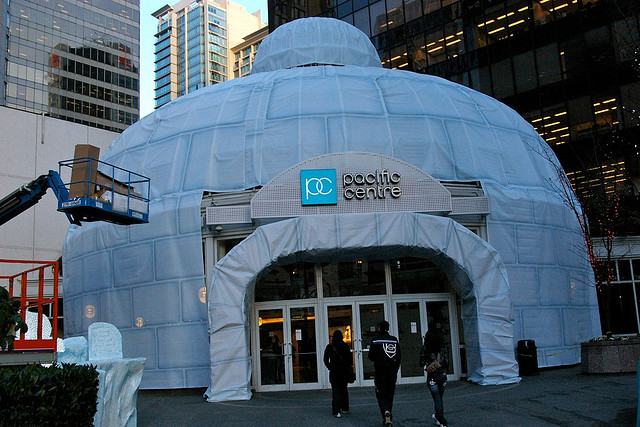
Integrated marketing communications (IMC) involves planning and coordinating all the promotional mix elements (including online and social media components) to be as consistent and mutually supportive as possible. This approach is much superior to using each element separately and independently.
Tour operators, attractions, hotels, and destination marketing organizations will often break down marketing into separate departments, losing the opportunity to ensure each activity is aligned with a common goal. Sometimes a potential visitor or guest is bombarded with messaging about independent destinations within a region, or businesses within a city, rather than one consistent set of messages about the core attributes of that destination.
It’s important to consider how consumers use various and multiple channels of communication and reach out to them in a comprehensive and coherent fashion. As a concept, IMC is not new, but it is more challenging than ever due to the numerous social media and unconventional communication channels now available. Each channel must be well maintained and aligned around the same messages, and selected with the visitor in mind. Too often businesses and destinations deploy multiple channels and end up neglecting some of these, rather than ensuring key platforms are well maintained (Eliason, 2014).
In order to better understand our guests, and the best ways to reach them, let’s take a closer look at the consumer as the starting and focal point of any marketing plan.
Consumer Behaviour in Tourism and Hospitality
Customers use their senses to see, hear, smell, and touch (and sometimes taste) to decipher messages from businesses, deciding on a product or service based on their perception of the facts rather than, at times, the actual facts. A number of factors have been shown to impact the choices the consumer makes, including personal factors, which reflect needs, wants, motivations, previous experience, and a person’s lifestyle, and interpersonal factors, such as culture, social class, family, and opinion leaders.
Perception Is Reality
The area of perception can be further broken down to screens and filters, biases, selective retention, and closure (Morrison, 2010). Let’s look at these concepts in more detail.

The world is filled with things that stimulate people. People are exposed to thousands of messages every day. Some stimuli come from the people around us; for example, a person on the bus might be wearing a branded cap, the bus may have advertising pasted all over it, and free newspapers distributed at the bus station could be filled with advertising. The human brain cannot absorb and remember all of these messages; people will screen out most of the stimuli they are exposed to. They may remember a piece or segment of a message they have seen or heard.
Take a Closer Look: 100 BC Moments Vending Machine
As part of a 2012 integrated campaign, Destination BC (then operating as Tourism BC) created a vending machine that offered users the opportunity to experience moments that could be part of their visit to British Columbia. At 14 feet tall, this vending machine dispensed free items like bikes, surfboards, and discounts on flights to encourage people to travel British Columbia. This experiential innovation was a way to provide a tangible element to intangible services. It was complemented by an online and social media campaign using the hashtag #100BCMoments and special web landing page at 100BCMoments.com. A video of the San Fransisco installation earned hundreds of thousands of views on YouTube; cutting through the clutter both in person and online. Watch it here: Giant Tourism BC Vending Machine comes to San Francisco: www.youtube.com/watch?v=VWbQtK4N8cM
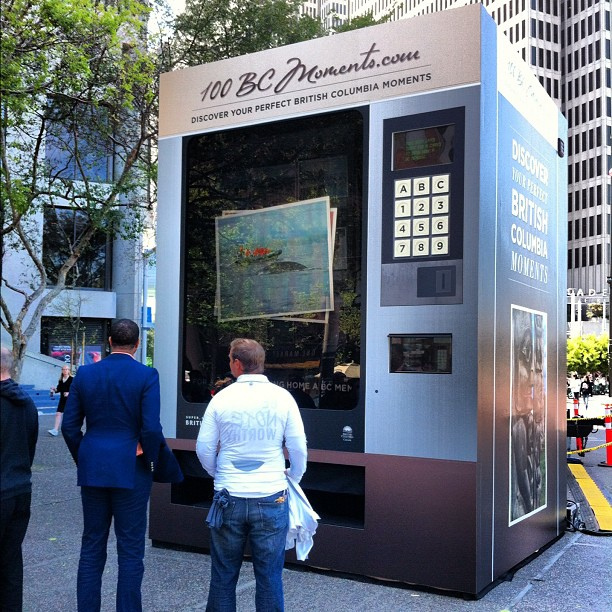
Perceptual Biases
Everyone has perceptual biases; each person sees things from his or her own unique view of the world. An advertising message can be received and changed to something very different from the marketer’s intended statement.
Selective Retention
Once messages have made it through the screens, filters, and biases, they still may not be retained for long. Customers will practise selective retention, holding on only to the information that supports their beliefs and attitudes.
Closure

The brain does not like incomplete images. There is a state of psychological tension present until the image is complete (closure). Where information is unavailable to round out the images, the mind adds the missing data. Over time, through the use of imagery and music (such as jingles), messages are ingrained in a customer’s mind, and he or she automatically adds the company’s name, whether it is mentioned or not.
Applying Psychology to Marketing
Marketers may determine a degree of predictability about customer perceptions. Customers are likely to:
- Screen out information that they are already familiar with
- Notice and retain information to satisfy a need they are aware of (want)
- Purchase services that reflect the image they perceive themselves to project
- Notice and retain things out of the norm
- Attach credibility to personal information rather than commercially generated information
Customers are less likely to:
- Use perceptual biases to distort information received on an interpersonal basis
- Absorb complicated information that requires effort to comprehend
- Notice and retain information about a competitive service or product if they are satisfied with another brand
Tourism marketers are in the business of reminding and making customers aware of their needs. Customers have to be motivated to act on satisfying their wants and needs, while marketers need to trigger the process by supplying objectives and potential motives.
Spotlight On: Tourism Victoria’s Visitor Centre
Tourism Victoria’s Visitor Centre is a member of the Visitor Centre Network. Staff are available to provide travellers with tourist information, assistance, and advice. The Tourism Victoria Visitor Centre provides travellers with a wide range of services, including professional visitor counselling, helpful travel information and literature, and accommodation reservations (Tourism Victoria, 2015).
Consumer Decision-Making Process

In 1968, Kollat, Blackwell and Engel released the first edition of a book called Consumer Behavior where they identified a distinct five-step pattern for consumer decision-making (1972). These steps are: need recognition, information search, pre-purchase evaluation, purchase, and post-purchase evaluation.
Here are some critical components at each stage:
- Need recognition: For this process to start there needs to be a stimulus; a need must be triggered and identified.
- Information search: The customer begins to consult different sources of information; personal (marketer dominated) and intrapersonal (non-marketer) factors will likely be used.
- Pre-purchase evaluation: After researching the choices, the customer starts to evaluate options using both objective criteria, such as price and location, and subjective criteria, such as the perceived status of the product or service.
- Purchase: The customer intends to buy the product or service that best matches the criteria, although he or she can still be influenced by a number of factors, such as friends and family who disagree with the purchase, or a change in personal finances.
- Post-purchase evaluation: After use, the customer evaluates the purchase against expectations; if these don’t match, the customer will be either dissatisfied (expectations not met) or impressed (expectations exceeded). For this reason, it’s best for hospitality and tourism providers to “under promise” and “over deliver.”
Spotlight On: BC Ferries Vacations
BC Ferries Vacations offers over 70 unique travel packages to 40 destinations, connecting travellers to unbeatable scenery, accommodations, and activities. With world-class hotels, activities, and adventures to choose from, travellers can experience BC’s pristine wildlife or urban coastal culture with each customized vacation package. BC Ferries Vacations travel experts help travellers create a personalized vacation complete with ferry reservations to bring all-in-one convenience, quality, and value. And, in partnership with some of BC’s best hotels, BC Ferries Vacations is able to provide customers with the best rates, customer service, and overall experiences, whether travelling to Vancouver, Victoria, the north coast, or to remote and amazing destinations in-between (BC Ferries Services, 2015).
In order to reach consumers and stimulate need, tourism marketers can employ a number of traditional and online channels. These are detailed in the next section.
Reaching the Consumer
Marketers have more choices than ever when it comes to broadcasting their message to consumers. Potential travellers and guests will respond, in varying degrees, to traditional channels and emerging online communications tools. There are many choices in marketing and communication channels, each with strengths and weaknesses. Determining the right mix, frequency, and message depends heavily on establishing objectives, completing research, performing a situational analysis, and creating a positioning approach (Morrison, 2010). Let’s take a closer look at communications channels that may form part of the marketing mix.
Traditional Channels
Mass Media
Mass media is best described as the use of channels that reach very large markets. Examples include national newspapers and radio or television advertising. The immediate advantage of using mass media is the ability to reach multiple target markets in significant numbers. Disadvantages include the high expense and difficulty in effective target marketing and measuring return.

Out-Of-Home (OOH)
Out-of-home (OOH) channels refer to four major categories: billboards, transit, alternative outdoor, and street furniture. OOH advertising plays an important role in the tourism and hospitality industry as it provides an opportunity to inform travellers in unfamiliar territory. Transit advertising includes airports, rail, and taxi displays. Alternative outdoor refers to arenas, stadiums, and digital media. Street furniture includes bus shelters, kiosks, and shopping malls.
Travel journalists, including bloggers, play an important role in ensuring a destination is well represented in the press. The Travel Media Relations Guide outlines how to invite, host, and follow up with media in the best way possible. To read the guide, visit Travel Media Relations Guide [PDF]: www.destinationbc.ca/getattachment/Programs/Guides-Workshops-and-Webinars/Guides/Tourism-Business-Essentials-Guides/TBE-Guide-Travel-Media-July2013.pdf.aspx
Print Media
Print media includes newspapers, magazines, journals, and directories. There is an increased trend away from traditional purchased print advertising toward editorial features, as these are more trusted by consumers. A print ad and an editorial feature created together is known as an advertorial.
Spotlight On: The Tartan Group
Founded in the 1990s in Victoria, The Tartan Group is a public relations firm focusing on tourism and hospitality clients including Clayoquot Wilderness Resort, Harmony Hotel, Inn at Laurel Point, and Hotel Zed. The staff have extensive experience working in the industry, and the organization has relationships with multiple tourism associations and press groups. For more information, visit the Tartan Group website: www.tartangroup.ca
Online Channels
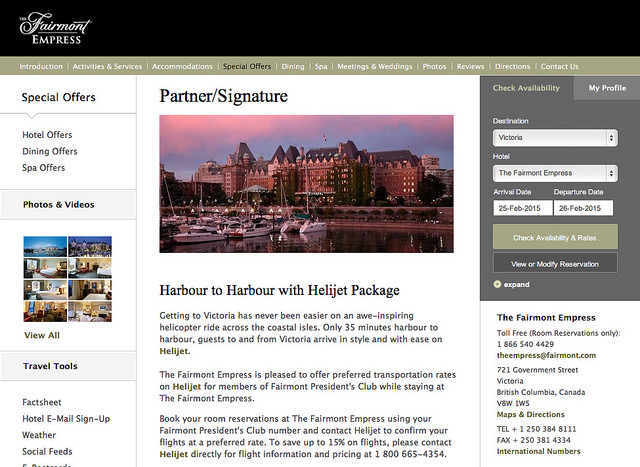
As discussed in Chapter 7, the internet is nearly twice as important as travel agents as an information source for travel (Deloitte, 2015). There are an estimated 3 billion people around the globe with internet access, and social media has become truly integrated into the travel and hospitality industry. TripAdvisor and similar sites have become the customer’s first point of connection with tourism and hospitality products and experiences. This can be both an opportunity and a threat: an opportunity to open the channels of communication, but a threat if negative information about the travel or hospitality organization is widely spread. As online distribution expands, empowered and savvy travellers are unbundling the booking component and self-booking directly (Deloitte, 2015).
Internet and mobile technology are referred to as interactive media. For tourism and hospitality businesses, there are significant advantages to creating an online presence: it’s cost effective, it provides global reach, it allows a business to be available 24/7, and it provides a reciprocal communication platform for customers.
Social Media and Reputation Management
There are also challenges with online marketing, including being noticed within the volume of information customers are exposed to, and loss of control in delivering a message. Despite these challenges, as more consumers seek real-time information online, tourism marketers are responding with increasingly sophisticated online marketing strategies. This section draws from resources and expertise provided by WorldHost Training Services (2013).
Social Media
Social media is a broad term that refers to web-based and mobile applications used for social interaction and the exchange of content. Social networking is the act of using social media. Unlike traditional media such as newspapers, magazines, and television, social media is largely powered by user-generated content. This refers to content created and shared by consumers rather than by marketers, journalists, experts, and other paid professionals, although they too contribute to social networks.
Word of Mouth in the Age of Social Media
Social networking has transformed how many people interact with businesses and share experiences with others, in a communication channel known as word of mouth where customers share directly with each other. Consumers now have a variety of channels on which to express likes and dislikes, many of which have large audiences. Some of this commentary is made in real time, on a smartphone, while the customer is still in the business (WorldHost, 2013).
Advertising and Trust
Social networks, and review sites in particular, are used more and more to seek information and advice on things to do and products and services to purchase. Travellers and locals alike check out these sites for ideas on where to stay, eat, relax, shop, and explore. These channels are highly trusted. A survey of over 28,000 consumers in 56 countries found that consumers trust the advice of people they know (92%) and consumer opinions posted online (70%) more than any other advertising source (Nielsen, 2012).
Online Reviews = Business Success
Research shows a direct correlation between consumer reviews and purchase decisions. A 2011 survey by Phocuswright found that three in four active travellers cite reviews and photos as influential in choosing activities (PR Newswire, 2011). A 2011 study conducted by Harvard Business School found that, for independent restaurants, a one-star increase in Yelp ratings led to a 5% to 9% increase in revenue (Luca, 2011). And, according to a study by the Cornell Center for Hospitality Research, if a hotel increases its review score on Travelocity by 1 point on a 5-point scale, it can raise its price by 11.2% without affecting demand (Anderson, 2012).
Understanding Customer Needs
As we have discussed, service plays an important role in shaping customer impressions, where the ultimate goal of a tourism or hospitality business is to exceed expectations. Every customer has different wants and needs, but virtually all customers expect the following basic needs to be taken care of:
- Quality
- Value
- Convenience
- Good service
To fully satisfy customers, businesses must deliver in all four areas. If they meet the basic needs listed above, they’ll create a passive customer — one who is satisfied, but not likely to write a review or mention a business to others.
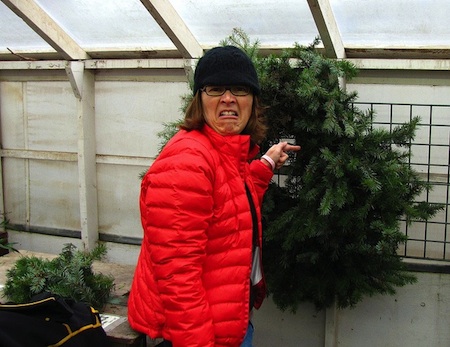
On the other hand, failure to deliver on the promise can result in a disappointed customer undoing all the efforts of the marketing plan. For this reason, the entire process must be well coordinated and well executed.
Bringing it All Together
The Role of Destination BC
Destination BC is responsible for executing key components of the provincial government’s tourism strategy (British Columbia Ministry of Jobs, Tourism and Innovation, 2011). As we learned in the last chapter, this provincial destination marketing organization has been mandated to fulfill several key marketing and leadership responsibilities critical to the long-term sustainable growth of the provincial tourism industry. This includes marketing British Columbia domestically, nationally, and internationally as a tourist destination (Destination BC, n.d.). Its first three-year corporate and marketing strategy was released in November 2014 articulating its new vision, mission, and goals.
Take a Closer Look: Online Reputation Management
This guide from Destination BC’s Tourism Business Essentials series helps businesses understand how to manage their online reputation and includes tips for responding to reviews and other best practice. To get a copy of the guide, visit the Online Reputation Management Guide [PDF]: www.destinationbc.ca/getattachment/Programs/Guides-Workshops-and-Webinars/Guides/Tourism-Business-Essentials-Guides/TBE-Guide-Online-Reputation-Management-2nd-Edition-Sep-2014-(2).pdf.aspx
Market Segmentation
Tourism marketers, including the team at Destination BC, choose target markets for their efforts through market segmentation techniques, where potential visitors are separated by:
- Demographics
- Countries of origin
- Trip purposes
- Trip planning and arrangements
- Psychographics and lifestyles
- Special interests
- Technology uses
The Canadian Tourism Commission’s award-winning Explorer Quotient program provides tourism marketers with detailed psychographic and travel motivations information (Canadian Tourism Commission, 2008; 2012). It allows destinations and experiences to market themselves to target audiences based on psychographic profiles (their psychological tendencies) rather than geographic segments.
Take a Closer Look: EQ (Explorer Quotient)
Destination Canada’s EQ tool allows businesses to segment their customers in a new and innovative way. EQ offers a range of online resources from an EQ Quiz (so you can identify what type of traveller you are) to business toolkits and more. Explore this new tourism marketing tool by visiting the Explorer Quotient tool: http://en.destinationcanada.com/resources-industry/explorer-quotient
BC’s Tourism and Hospitality Key Markets
BC’s key target tourism markets can be broken down into three main categories: nearby markets, top priority markets, and emerging markets (BC Ministry of Jobs, Tourism and Innovation, 2011).
Nearby markets are BC, Alberta, and Washington State, which are characterized by high volume and strong repeat visitation. Marketing activities to these areas are led by the regions, communities, and/or sectors such as ski. Top priority markets of Ontario, California, Germany, Japan, United Kingdom, South Korea, Australia are characterized by high revenue and high spending per visitor. Marketing efforts here are led by Destination BC. Emerging markets, which include China, India, and Mexico, are monitored and explored by Destination BC.
Performance Measurement and Evaluation
In order to measure its success in the realm of destination marketing, Destination BC has introduced a tool called the net promoter score (NPS), a metric designed to monitor customer engagement. The NPS indicates the likelihood of travellers recommending a destination to friends, family, or colleagues. NPS is based on responses to the question, How likely are you to recommend [British Columbia] as a travel destination to a friend, family member, or colleague? Responses are scored from 0 = “not at all likely” to 10 = “extremely likely.” Respondents are divided into three categories:
- Detractors (scores of 0 to 6): Unhappy visitors, unlikely to tell others to visit and might even damage the reputation of a destination through negative word of mouth
- Passives (scores of 7 or 8): Marginally satisfied visitors not excited enough to tell others about their travel experience
- Promoters (scores of 9 or 10): Loyal enthusiasts likely to return and rave about their travel experience
NPS is calculated by subtracting the percentage of detractors from the percentage of promoters: NPS = % of detractors — % of supporters. The intention to recommend a travel destination, reported by the NPS, is a proxy measure of overall satisfaction with the travel experience. Satisfaction with the travel experience and the intention to recommend greatly increase the likelihood of a return visit to British Columbia. And word-of-mouth advocacy, either face-to-face or through social media, is critical for attracting first-time visitors to British Columbia.
Destination BC uses NPS as a performance measurement tool (among others) to help determine the overall effectiveness of online and integrated marketing communications strategies (Destination BC, 2013). Furthermore, Destination BC has developed the Remarkable Experiences program to “enable tourism operators to become experts in areas such as service design and digital marketing” (Destination BC, 2014).
Spotlight On: Aboriginal Travel Services
Aboriginal Travel Services (ATS) is BC’s first Aboriginal-owned travel agency, focusing on business and leisure needs of companies, First Nations bands, and individual tourists. Located on Coast Salish territories in downtown Vancouver, ATS reinvests profits into Aboriginal communities by way of youth scholarships in tourism and hospitality. The agency was developed as a social enterprise, with the dual purpose of selling travel services that provide cultural and economic opportunities to the communities it serves and committing to investing in the Aboriginal communities and tourism initiatives (Aboriginal Travel Services, 2015). For more information, visit the Aboriginal Travel Services website: www.aboriginaltravelservices.com
Effective planning, research, customer understanding, integrated marketing communications, and using online customer service strategies to support effective marketing are fundamental requirements for successful services marketing. However, it is critical that marketers understand the key trends and issues that will help to identify tomorrow’s marketing strategies (Government of Canada, 2013).
Trends and Issues
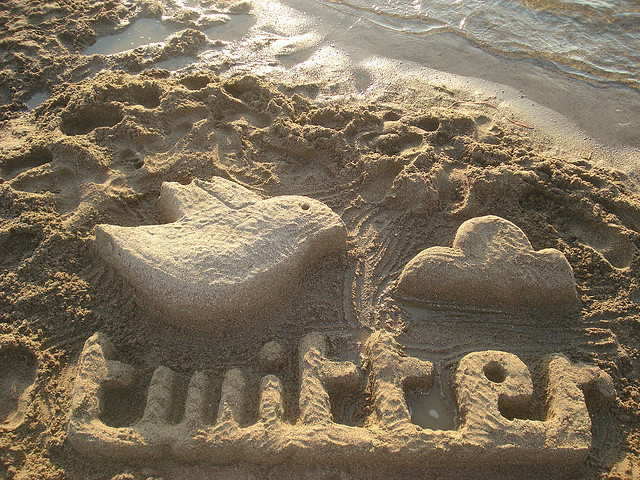
Tourism marketers in BC need to monitor trends in the following areas that may impact the success of their marketing efforts:
- Demographic shifts (aging population, the rise of millennials), and socioeconomics (cultural changes, economic decline/growth)
- Political, economic, and geographic changes (emerging or declining economies)
- Trip purpose (growth of multipurpose trips)
- Psychographic changes (special interests, healthy lifestyles, sustainability)
- Behavioural adaptations (free independent travel, decreasing brand loyalty)
- Product-related trends (emerging niches)
- Distribution channels (online travel agencies, virtual travel)
Remaining abreast of information in these areas is critical to the success of any services marketing plan, which should be continually monitored and adapted as the landscape changes.
Conclusion
Effective services marketing in the tourism and hospitality sector requires marketers to gain a solid understanding of the differences between the marketing of goods and services. Successful organizations use market research to learn the preferences and behaviours of key customer segments. Through a strategic planning process, organizations and destinations develop a marketing orientation designed to identify customer needs and trigger their wants, while striving to meet organizational objectives. Activities are designed to support integrated marketing communications across multiple platforms with reciprocal communications — that is, not just broadcasting information, but having conversations with customers. Savvy marketers will leverage these conversations to keep up with evolving customer interests while seeking an understanding of emerging trends in order to anticipate needs and wants. Engaged marketers also know that social media and integrated marketing communications must be complemented with remarkable customer service, which ultimately supports successful marketing strategy.
Chapter 9 will delve further into the components of delivering exceptional customer service as a key component of industry success.
Key Terms
- 8 Ps of services marketing: refers to product, place, promotion, pricing, people, programming, partnership, and physical evidence
- Advertorial: print content (sometimes now appearing online) that is a combination of an editorial feature and paid advertising
- Customer needs: gaps between what customers have and what they would like to have
- Customer wants: needs of which customers are aware
- E-commerce: electronic commerce; performing business transactions online while collecting rich data about consumers
- Emerging markets: markets for BC that are monitored and explored by Destination BC — China, India, and Mexico
- Heterogeneous: variable, a generic difference shared by all services
- Intangible: untouchable, a characteristic shared by all services
- Integrated marketing communications (IMC): planning and coordinating all the promotional mix elements and internet marketing so they are as consistent and as mutually supportive as possible
- Interactive media: online and mobile platforms
- Interpersonal factors: the influence of cultures, social classes, family, and opinion leaders on consumers
- Marketing: a continuous, sequential process through which management plans, researches, implements, controls, and evaluates activities designed to satisfy the customers’ needs and wants, and its own organization’s objectives
- Marketing orientation: the understanding that a company needs to engage with its markets in order to refine its products and services, and promotional efforts
- Market segmentation: specific groups of people with a similar profile, allowing marketers to target their messaging
- Mass media: the use of channels that reach very large markets
- Nearby markets: markets for BC, identified by Destination BC as BC, Alberta, and Washington State, characterized by high volume and strong repeat visitation
- Net promoter score (NPS): a metric designed to monitor customer engagement, reflecting the likelihood that travellers will recommend a destination to friends, family, or colleagues
- Out-of-home (OOH): channels in four major categories: billboards, transit, alternative outdoor, and street furniture
- Passive customer: a guest who is satisfied (won’t complain, but won’t celebrate the business either)
- Perishable: something that is only good for a short period of time, a characteristic shared by all services
- Personal factors: the needs, wants, motivations, previous experiences, and objectives of consumers that they bring into the decision-making process
- PRICE concept: an acronym that helps marketers remember the need to plan, research, implement, control, and evaluate the components of their marketing plan
- Print media: newspapers, magazines, journals, and directories
- Services marketing: marketing that specifically applies to services such as those provided by the tourism and hospitality industries; differs from the marketing of goods
- Services marketing triangle: a model for understanding the relationship between the company, its employees, and the customer; differs from traditional marketing where the business speaks directly to the consumer
- Social media: refers to web-based and mobile applications used for social interaction and the exchange of content
- Societal marketing: marketing that recognizes a company’s place in society and its responsibility to citizens (or at least the appearance thereof)
- Tangible: goods the customer can see, feel, and/or taste ahead of payment
- Top priority markets: markets for BC identified as a top priority for Destination BC — Ontario, California, Germany, Japan, United Kingdom, South Korea, Australia — which are characterized by high revenue and high spend per visitor
- Tourism marketing system: an approach that guides the planning, execution, and evaluation of tourism marketing efforts (PRICE concept is an approach to this)
- Word of mouth: information about a service experience passed along orally or through other social information sources from past customers to potential customers
Exercises
- Fill in the blanks. During a successful marketing planning process, management will:
P: __________________________________
R: __________________________________
I: __________________________________
C: __________________________________
E: __________________________________ - Should services be marketed exactly the same as manufactured products and packaged goods? Why or why not?
- Name at least three reasons for tourism marketers to do marketing research.
- Why is segmentation so important to effective marketing?
- What does integrated marketing communications achieve?
- What stages do customers usually go through when they make decisions about buying travel services?
- Name the three types of market priorities for British Columbia’s tourism experiences (according to Destination BC). What geographic segments are found in each?
- What is the net promoter score (NPS) for a destination with 20% detractors and 80% supporters?
- Why is delivering great experiences an important part of services marketing? Give five reasons.
- Take the Explorer Quotient (EQ) test at https://quiz.canada.travel/caen. Review the EQ profile document to learn more about your traveller type.
- What characteristics do you agree with, which ones do you not? Why?
- Select one of the experiences (preferably in BC) matched to your profile and determine how it fits your type.
- How does the website of that company market to your traveller type? What visuals or key words do they use to get your attention?
Case Study: The Wickaninnish Inn
Located in Tofino, the Wickaninnish Inn (or “the Wick,” as it’s affectionately known) is a world-recognized high-end property famous for offering four seasons of luxury experiences on BC’s “wild coast.” But how does the Wick stay top-of-mind with tourism consumers? A quick look at their marketing mix offers some answers:
- Product: The inn has long been a leader in offering experiences that go above and beyond a room in a luxury hotel, starting with their storm-watching packages in the late fall, a time that was once their off-season.
- Place: Reservations can be made online on the inn’s website, via a toll-free number, through OTA sites including TripAdvisor (where reviews are constantly monitored in order to engage with customers), and other reservation services including the HelloBC program. The staff constantly engages with, and monitors their customers, tracking trends in traveller purchasing behaviour to ensure it is front and centre with the inn’s target markets.
- Promotion: The inn has a well-maintained, visually rich website and social media presence on Instagram, Twitter, Facebook, YouTube, Pinterest, Google+, and Flickr (a presence that shifts constantly depending on where consumers can be found online). Its site features a media page with blogs, press releases, and high-resolution photos and videos to ensure journalists can easily post a story at any time.
- Pricing: The inn has a comprehensive revenue management and pricing plan that includes packaging and promotions for all seasons. The pricing reflects offering value to guests, while confidently staying at the higher end of the scale.
- People: Not only does the inn attract and train staff who deliver on its promise of exceptional experiences, the Wick also has a multi-person team responsible for sales, marketing, and media (blogging, press releases, photography, hosting familiarization tours).
- Programming: Programs include packaging under themes such as elopement, natural, seasonal, romantic, spa, and culinary. Many packages include the involvement of hotel personnel such as an elopement coordinator or concierge to help guests plan specific value-added and memorable components of their experience, such as a last-minute wedding (Wickaninnish Inn, 2015).
- Partnership: The Wick partners with other experience providers and events such as the Tofino Saltwater Classic — a fishing tournament hosted by Brendan Morrison of the Vancouver Canucks. By supporting the event as a platinum sponsor (Tofino Saltwater Classic, 2014), the representatives from the inn meet new potential guests and solidifies its place in the community.
- Physical evidence: In addition to familiarization tours (see Chapter 7 for definition), the media team ensures the inn is considered for a number of high-profile awards, and celebrates wins by broadcasting these as they occur (e.g., Travel and Leisure Awards World’s Best Winner 2014). Prize logos are placed on the inn’s home page online, in print ads, and in physical locations on the property. The inn also has a regular consumer newsletter that celebrates achievements and shares promotions with past and future guests.
Thinking about this example, answer the following questions:
- Imagine the inn received a review on TripAdvisor that showed a customer was not satisfied. How might it deal with this?
- Visit the company’s website at www.wickinn.com. Who are the target customers? How is this conveyed on the site?
- What are the prices for packages and accommodations? What does the price signal to you about the experience you might have at this hotel?
- Do an online search for “Wick Inn” using your favourite search engine. What are the first five links that come up? How do these present the property? What hand does the inn’s staff have in these results?
- Look at the community of Tofino as it is presented online and name five potential partners for the Wick.
References
Aboriginal Travel Services. (2015). Aboriginal Travel Services. Retrieved from www.aboriginaltravelservices.com
Anderson, C. (2012). The impact of social media on lodging performance. Retrieved from www.hotelschool.cornell.edu/research/chr/pubs/reports/abstract-16421.html
BC Ferries Services. (2015). BC Ferries vacations. Retrieved from: www.bcferriesvacations.com
British Columbia Ministry of Jobs, Tourism and Innovation. (2011). Gaining the edge: A five year strategy for tourism in British Columbia. [PDF] Retrieved from: www.jtst.gov.bc.ca/tourismstrategy/documents/mjti_tourismstrategyreport_fnl.pdf
Canadian Tourism Commission. (2008). The explorer quotient: A deeper understanding of the modern traveller. [PDF] Retrieved from: www.ttracanada.ca/sites/default/files/uploads/ctc._the_explorer_quotient_-_a_deeper_understanding_of_the_m.pdf
Canadian Tourism Commission. (2012). EQ profiles. [PDF] Retrieved from: https://en-corporate.canada.travel/sites/default/files/pdf/Resources/ctc_eq_profiles_2012-eng-lowres.pdf
Davis, K. (2013, July 17). A (kind of) brief history of marketing (infographic). Entrepreneur. Retrieved from www.entrepreneur.com/article/227438
Deloitte. (2015). Hospitality 2015 game changers or spectators? Retrieved from www2.deloitte.com/ie/en/pages/consumer-business/articles/hospitality-2015.html
Destination BC. (n.d.). About us. Retrieved from: www.destinationbc.ca/About-Us.aspx
Destination BC. (2013). Net promoter score. Retrieved from: www.destinationbc.ca/Resources/Monitoring-and-Evaluation/Net-Promoter-Score.aspx#.VOZd1_nF9Z9
Destination BC. (2014). Remarkable experiences program. Retrieved from: http://strategy.destinationbc.ca/how-we-will-win/foster-remarkable-experiences/remarkable-experiences-program/
Eliason, K. (2014, December 23). The importance of integrated marketing communications. Retrieved from www.portent.com/blog/internet-marketing/raining-marketing-importance-integrated-marketing-communications.htm
Government of Canada. (2013). FedNor: A guide to using market research and marketing measurement for successful tourism destination marketing. Retrieved from: http://fednor.gc.ca/eic/site/fednor-fednor.nsf/eng/fn03327.html
Kollat, D., Blackwell, R., & Engel, J. (1972). The current status of consumer behavior research: Developments during the 1968-1972 period. Proceedings of the Third Annual Conference of the Association for Consumer Research. Chicago, IL : Association for Consumer Research, pp. 576-585.
Luca, M. (2011, September 16). Reviews, reputation, and revenue: The case of Yelp.com. [PDF] Retrieved from www.hbs.edu/faculty/Publication%20Files/12-016_0464f20e-35b2-492e-a328-fb14a325f718.pdf
Morrison, A. M. (2010). Hospitality & travel marketing (4th ed., international ed.). Clifton Park, NY: Delmar Cengage Learning.
Nielsen. (2012, April 10). Global consumers’ trust in ‘earned’ advertising grows in importance. Retrieved from www.nielsen.com/us/en/press-room/2012/nielsen-global-consumers-trust-in-earned-advertising-grows.html
PR Newswire. (2011, January 11). Smart phones, social media and local search create marketing mojo in the travel industry, new report says. Retrieved from www.prnewswire.com/news-releases/smart-phones-social-media-and-local-search-create-marketing-mojo-in-the-travel-industry-new-report-says-113262519.html
Tofino Saltwater Classic. (2014). Tofino saltwater classic. Retrieved from www.tofinosaltwaterclassic.com
Tourism Victoria. (2015). Visitors centre. Retrieved from: www.tourismvictoria.com/plan/visitor-centre
Wickaninnish Inn. (2015). Elopement wedding packages. Retrieved from www.wickinn.com/package-type/elopement
Wolak, R., Kalafatis, S., & Harris, P. (1998). An investigation into four characteristics of services. [PDF] Journal of Empirical Generalisations in Marketing Science, 3, 22-43. Retrieved from http://members.byronsharp.com/empgens/emp1.pdf
WorldHost Training Services. (2013). Remarkable service in the age of social media. Retrieved from: www.worldhosttraining.com/elearning/
Attributions
Figure 8.1 Vintage Ad #1,203: This Cheap Hotel Does Not Compute by Jamie is used under a CC BY 2.0 license.
Figure 8.2 1970s Advertising – Poster – Peter Max Don’t Smoke Cigarettes (USA) by Daniel Anyes Arroyo is used under a CC BY-NC 2.0 license.
Figure 8.3 British Columbia Parliament Christmas Lights by James Wheeler is used under a CC BY-NC-SA 2.0 license.
Figure 8.4 Empty Flight by Rex Roof is used under a CC BY 2.0 license.
Figure 8.5 Services Marketing Triangle by LinkBC is used under a CC BY-NC-SA 2.0 license.
Figure 8.6 Pacific Centre igloo by Janis Behan is used under a CC BY-NC-SA 2.0 license.
Figure 8.7 Army Photography Contest – 2007 – FMWRC – Arts and Crafts – Eye of the Holder by US Army is used under a CC BY 2.0 license.
Figure 8.8 BC Tourism Vending Machine by davitydave is used under a CC BY 2.0 license.
Figure 8.9 Precious Treasure by Dave Sutherland is used under a CC BY-NC-SA 2.0 license.
Figure 8.10 Victoria’s Inner Harbour at Night 2012 by Gord McKenna is used under a CC BY-NC-ND 2.0 license.
Figure 8.11 Out of Home Advertising for Grouse Mountain by LinkBC is used under a CC BY 2.0 license.
Figure 8.12 Fairmont Empress and Helijet Partnership by LinkBC is used under a CC BY 2.0 license.
Figure 8.13 Wreath makin’ – an unhappy customer (pas moi) by Katy is used under a CC BY-NC-ND 2.0 license.
Figure 8.14 Twitter escultura de arena by Rosaura Ochoa is used under a CC BY 2.0 license.
Long Descriptions
Figure 8.1 long description: A man holds up a calculator looking confused. He says, “Are you kidding me? A big double bed, television, air conditioning, and only $12.95 a night? It doesn’t compute.” [Return to Figure 8.1]
Figure 8.5 long description: Internal marketing is used between the company and its employees. External marketing is used between the company and its customers. Interactive marketing is used between the employees and the customers. [Return to Figure 8.5]

